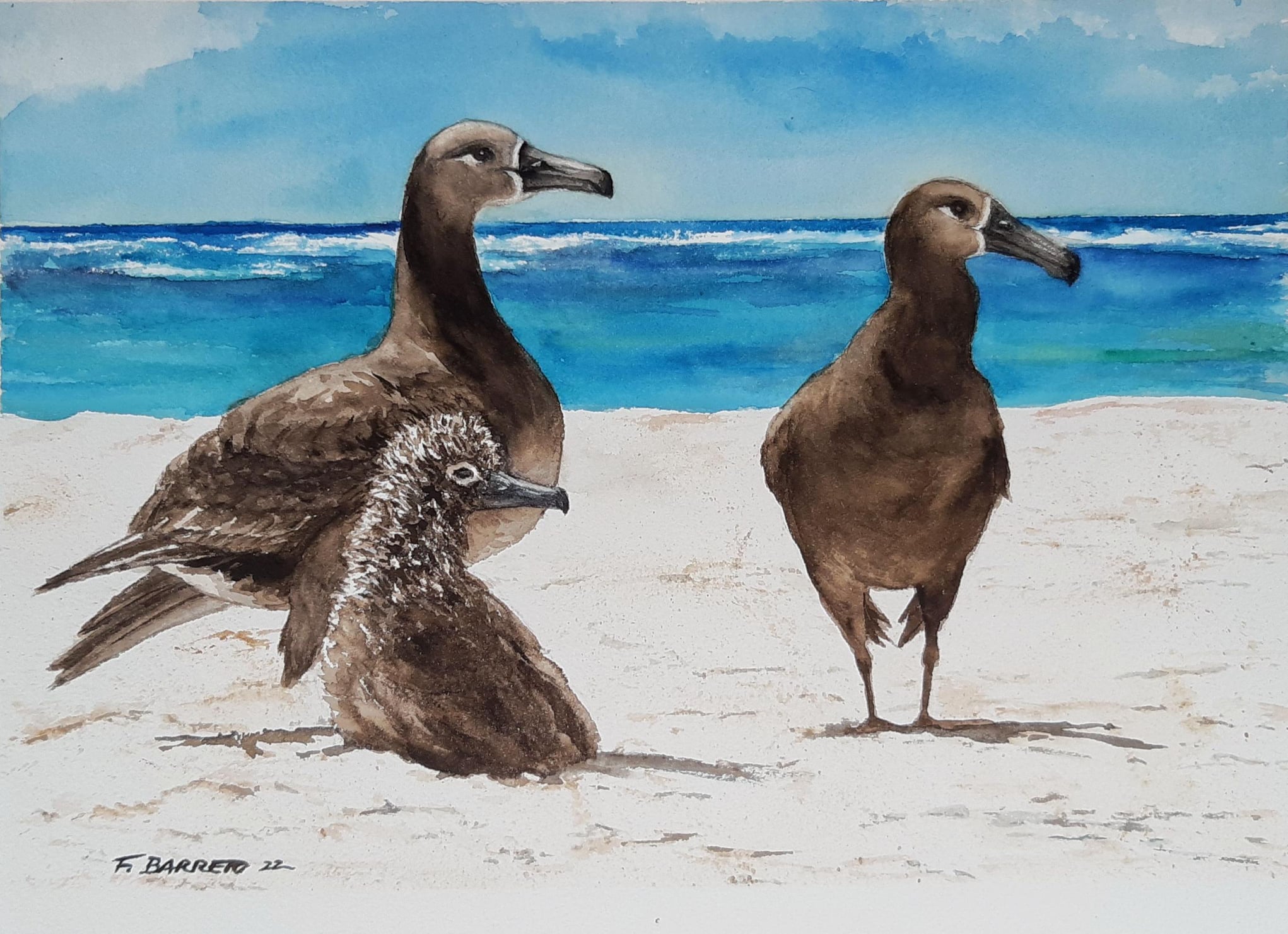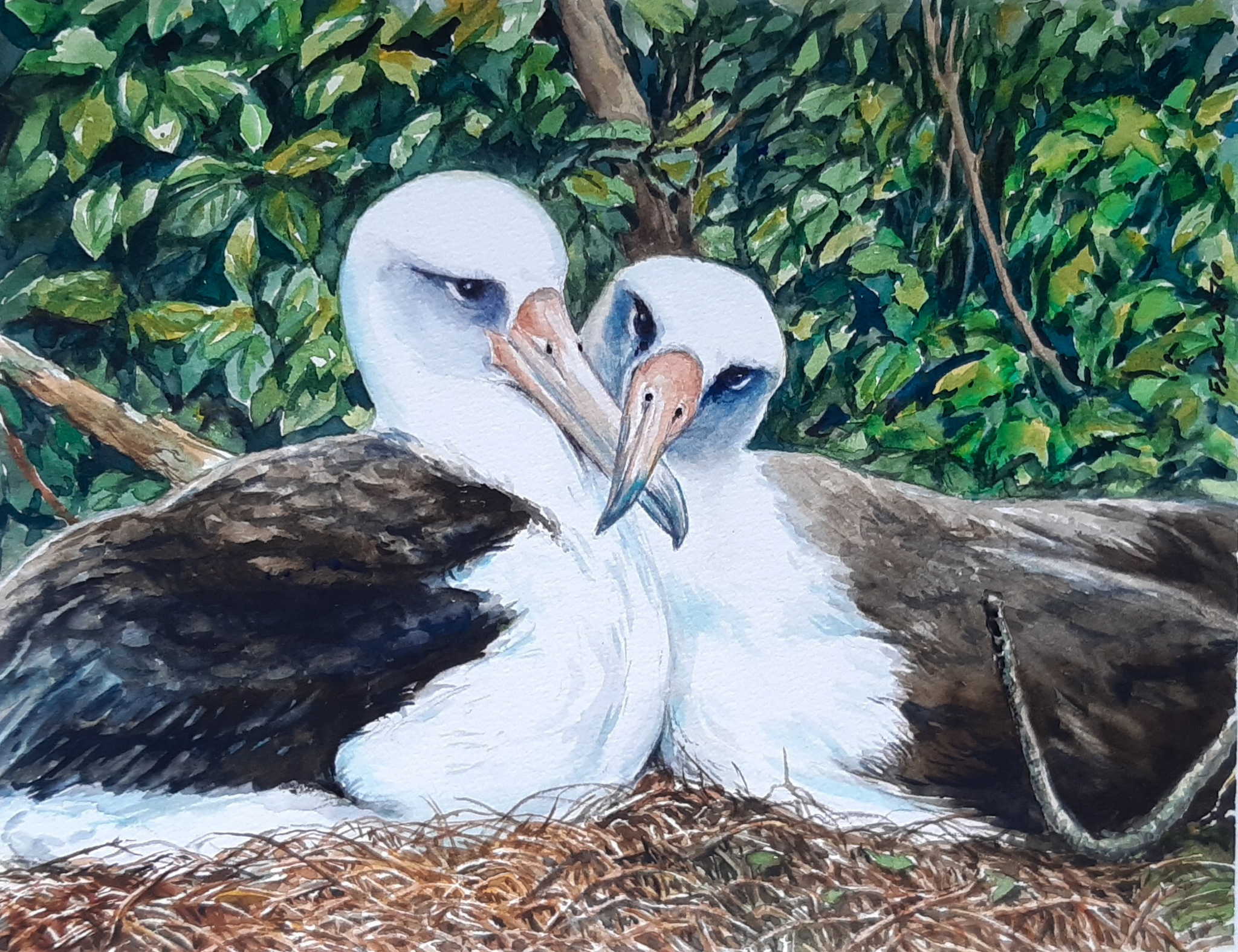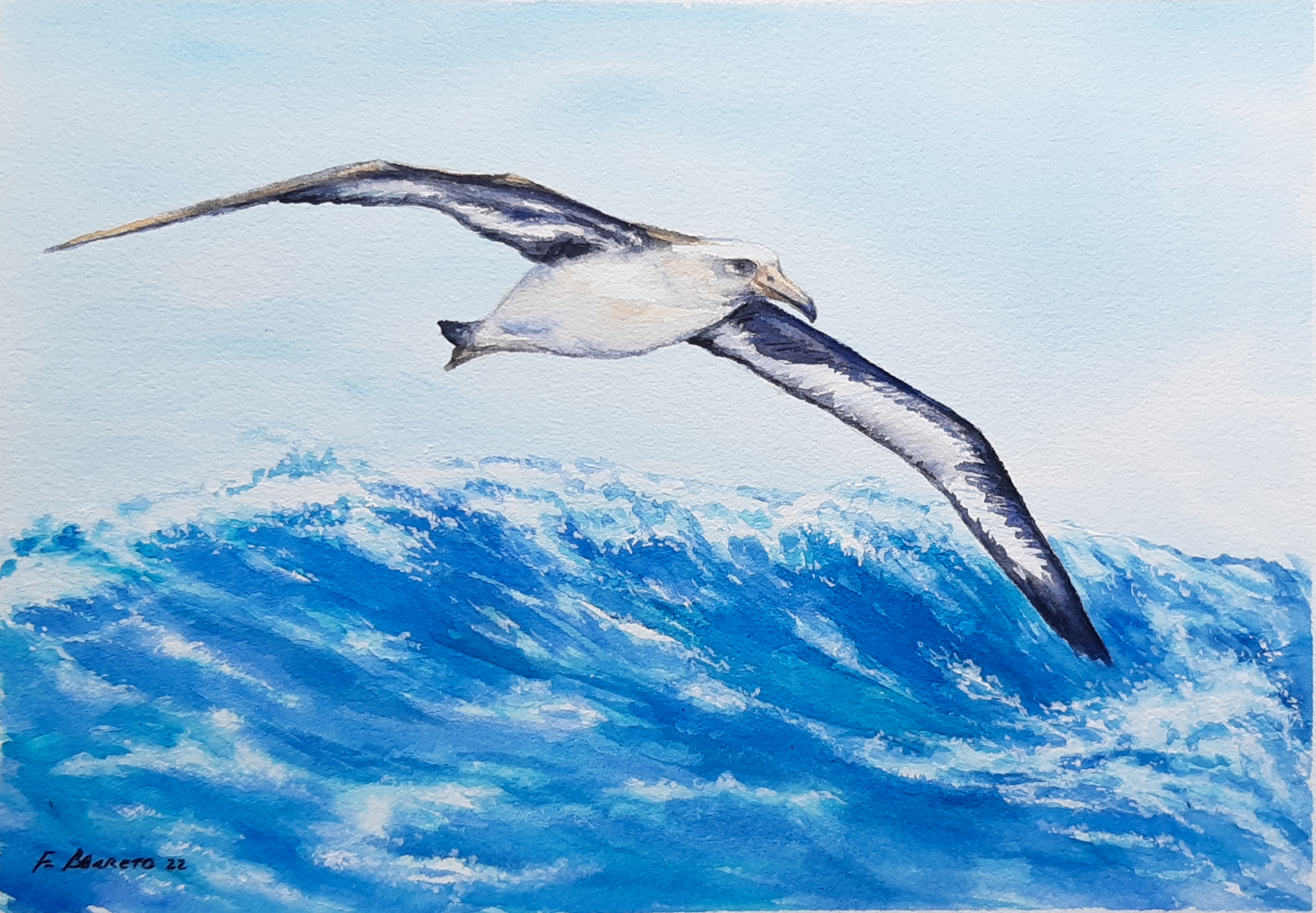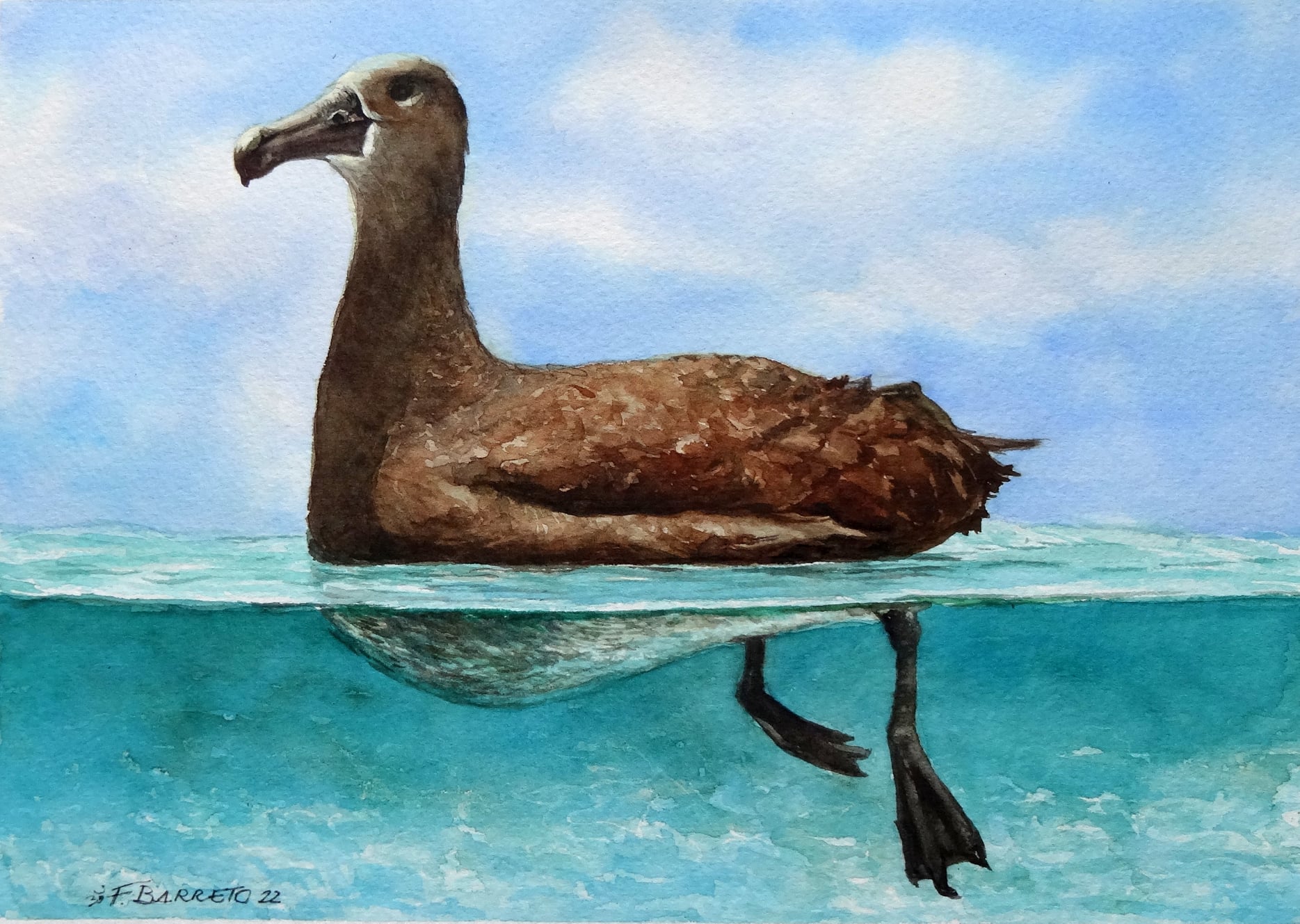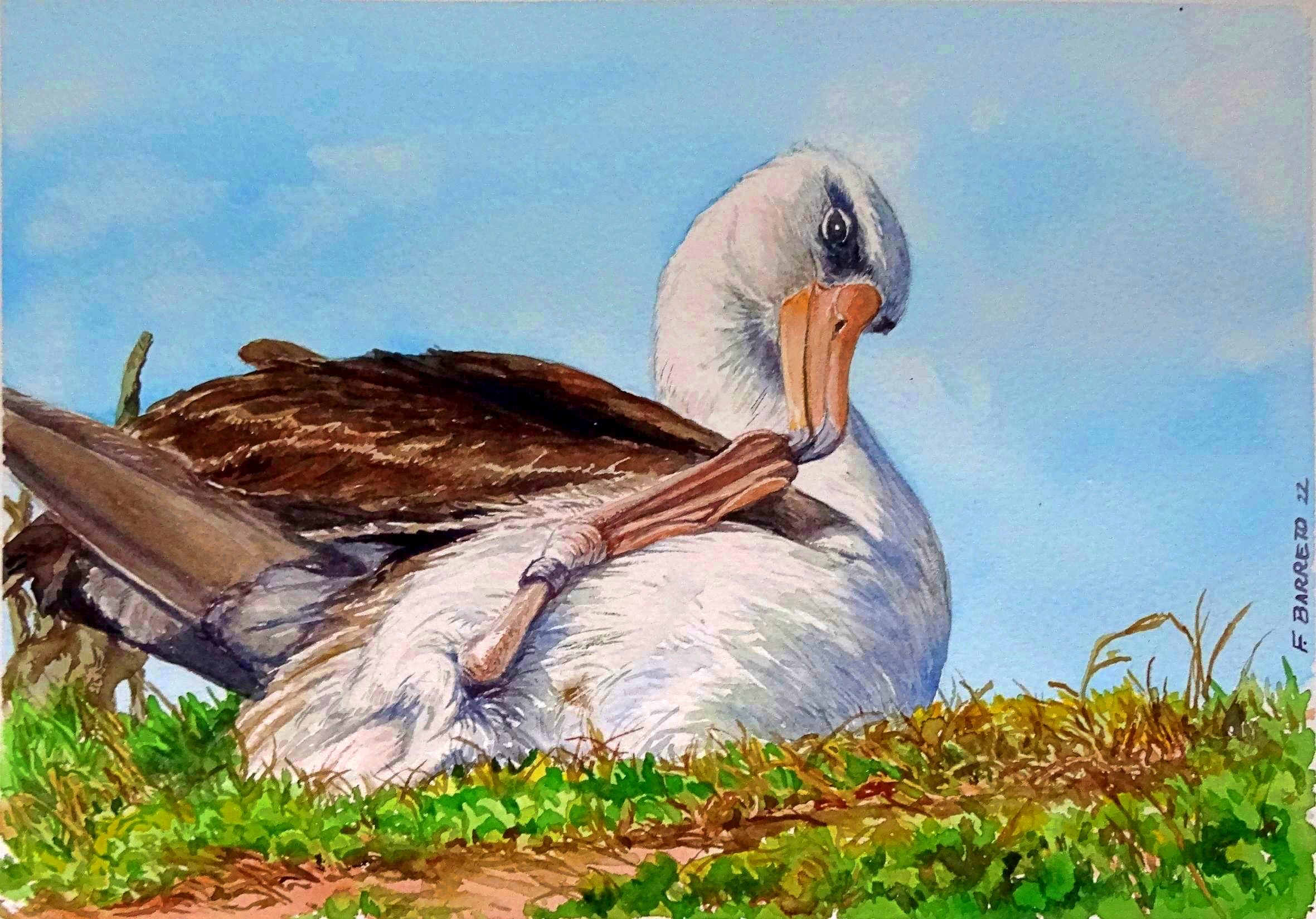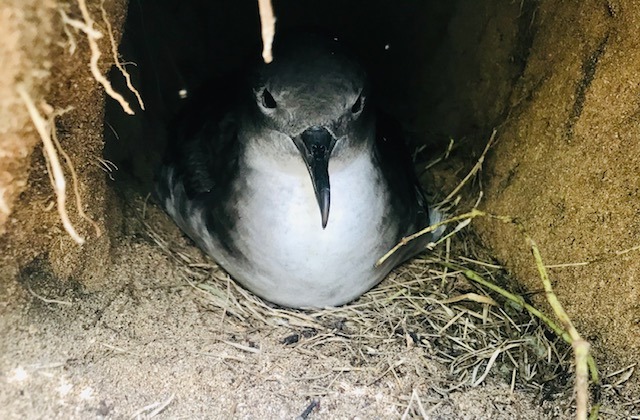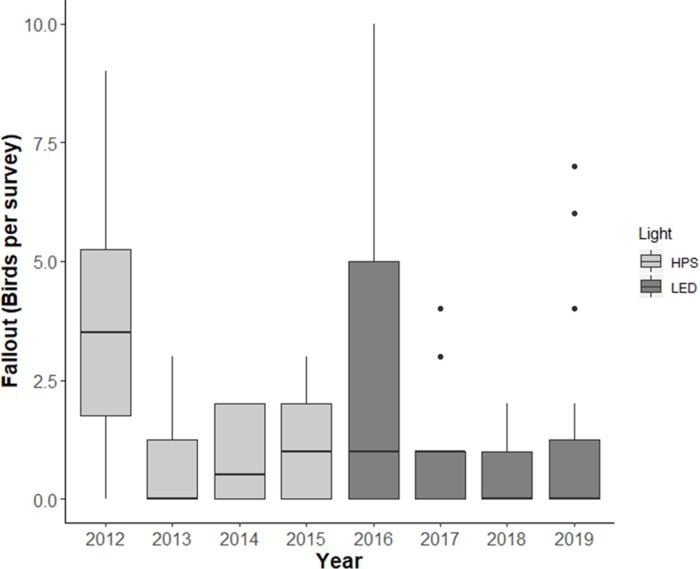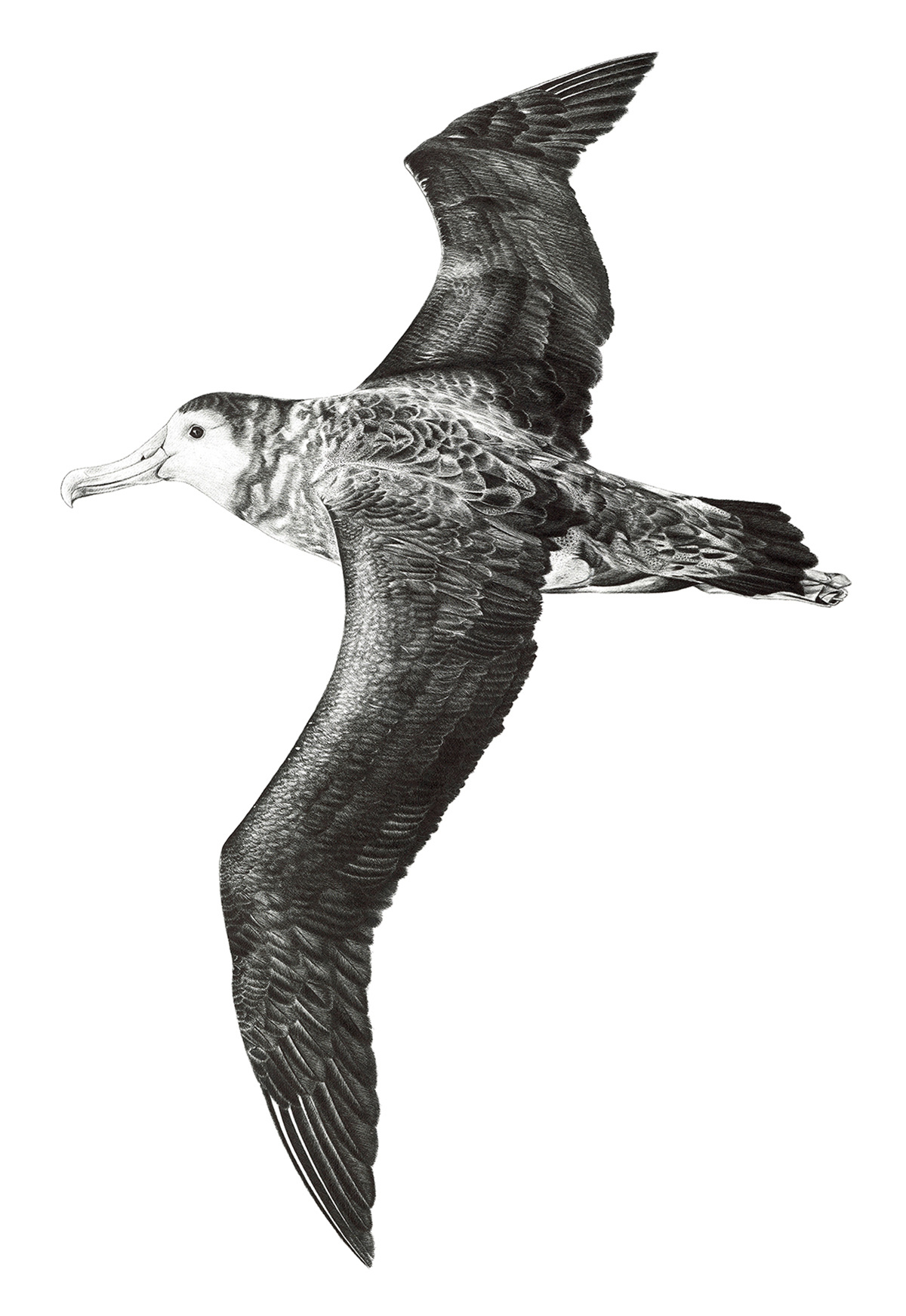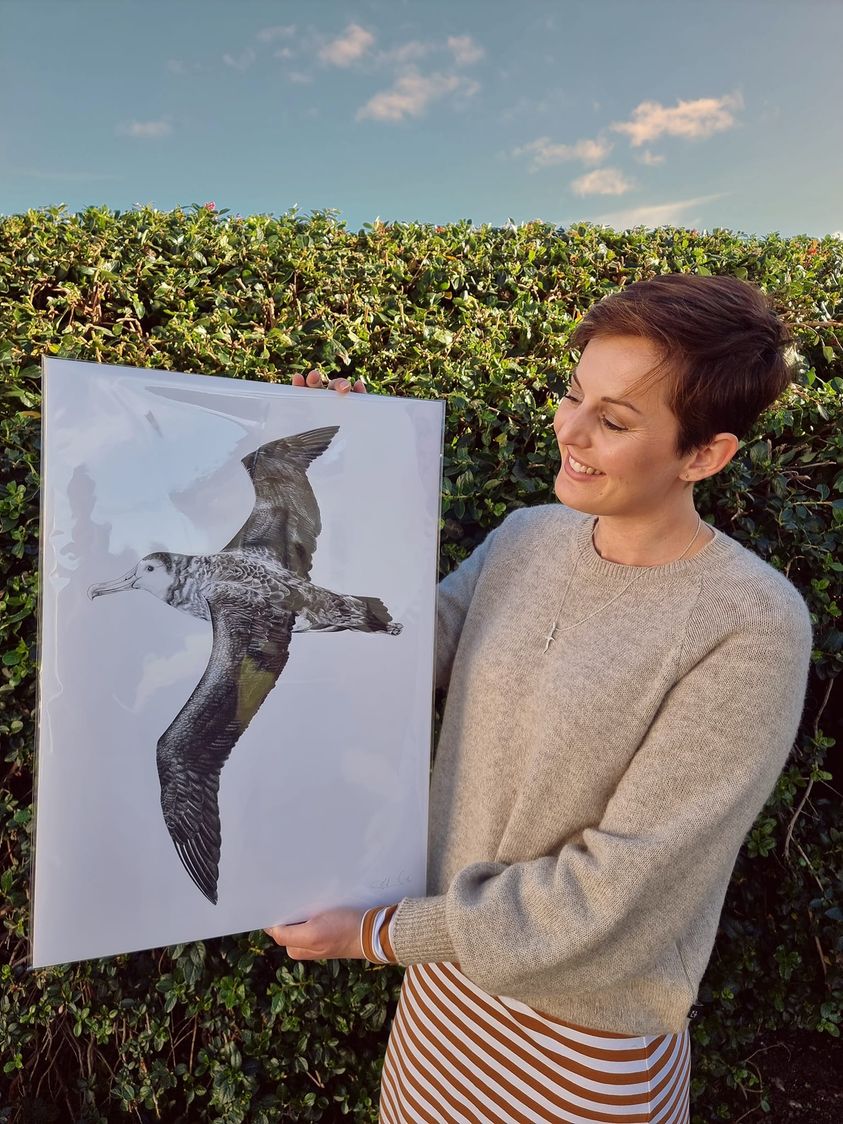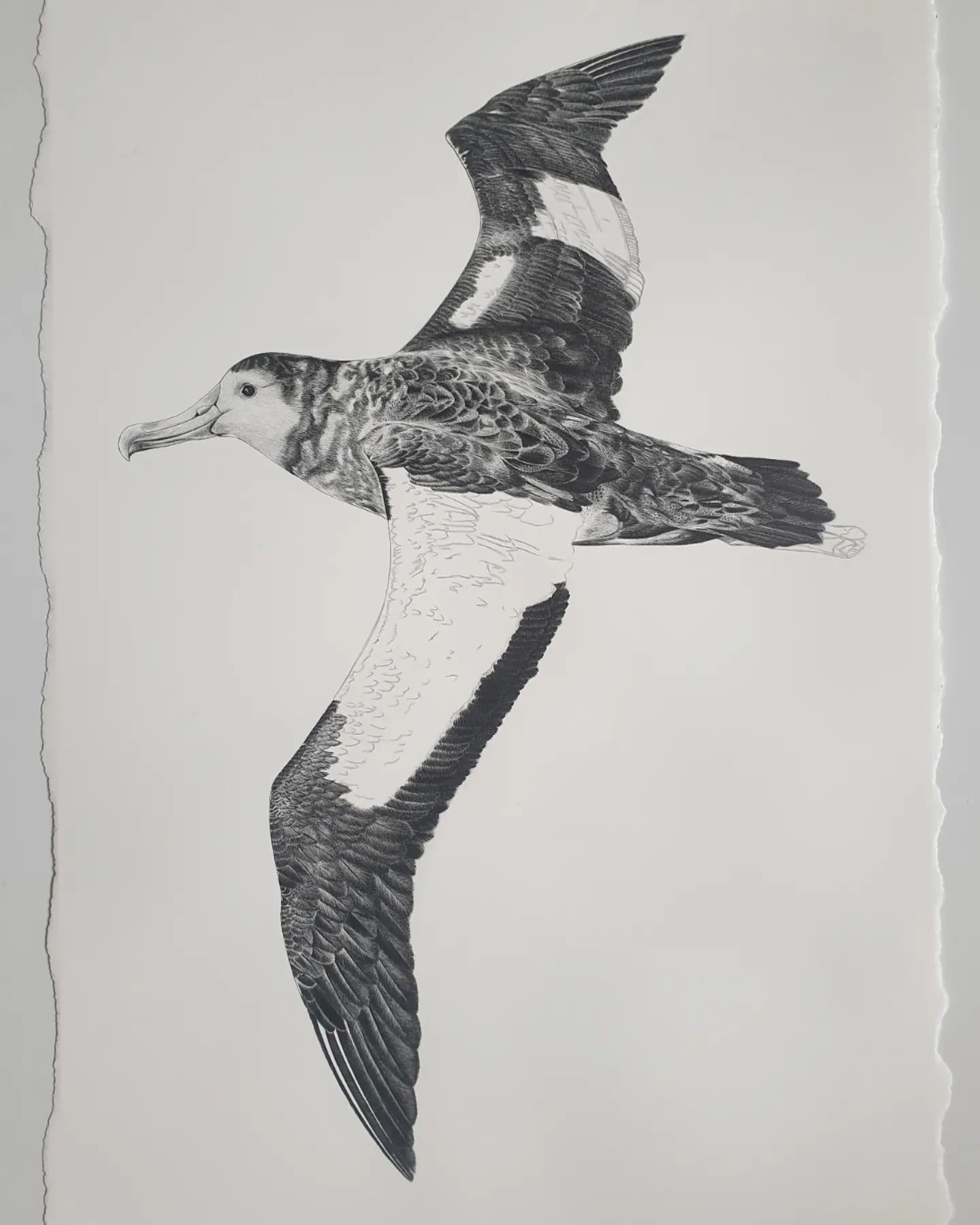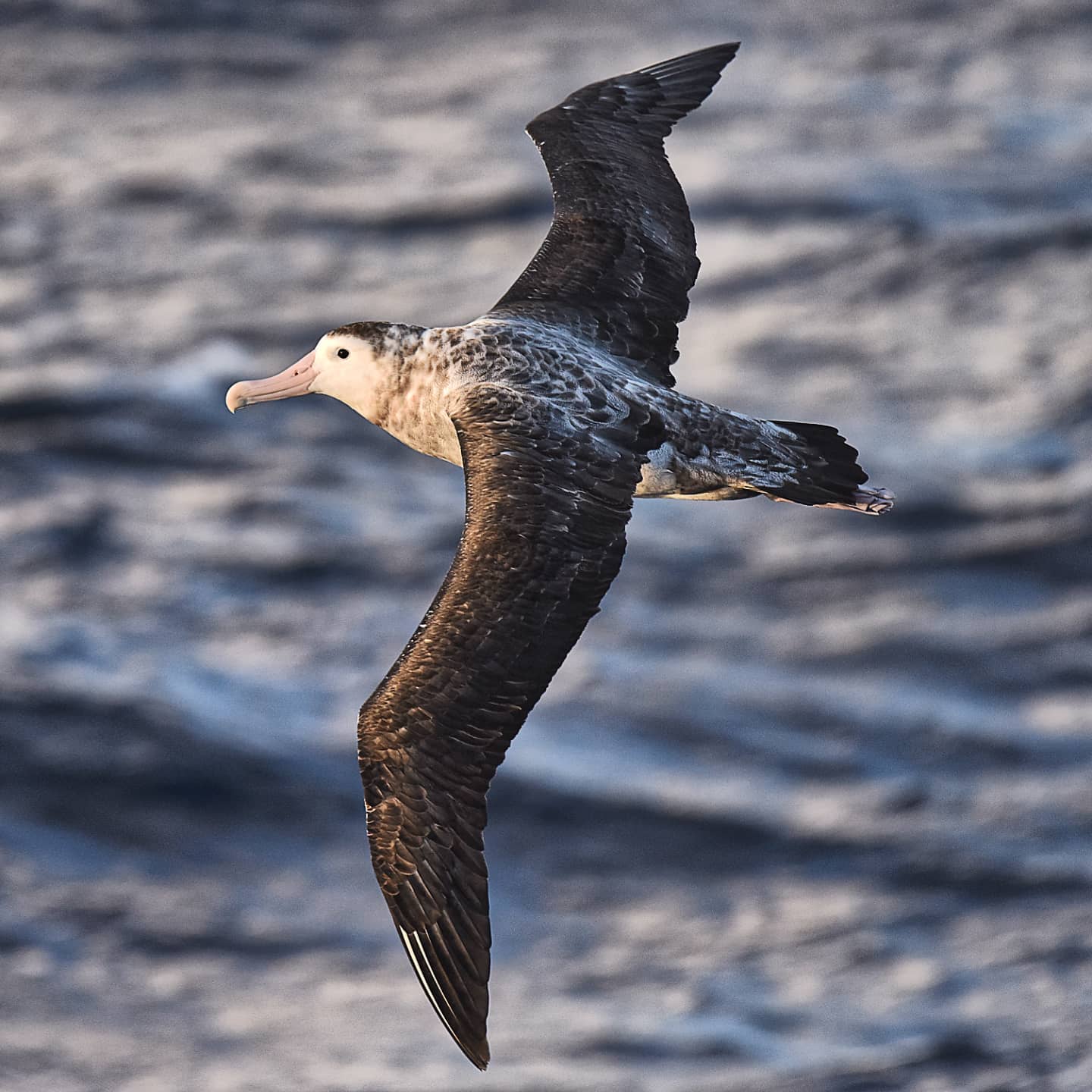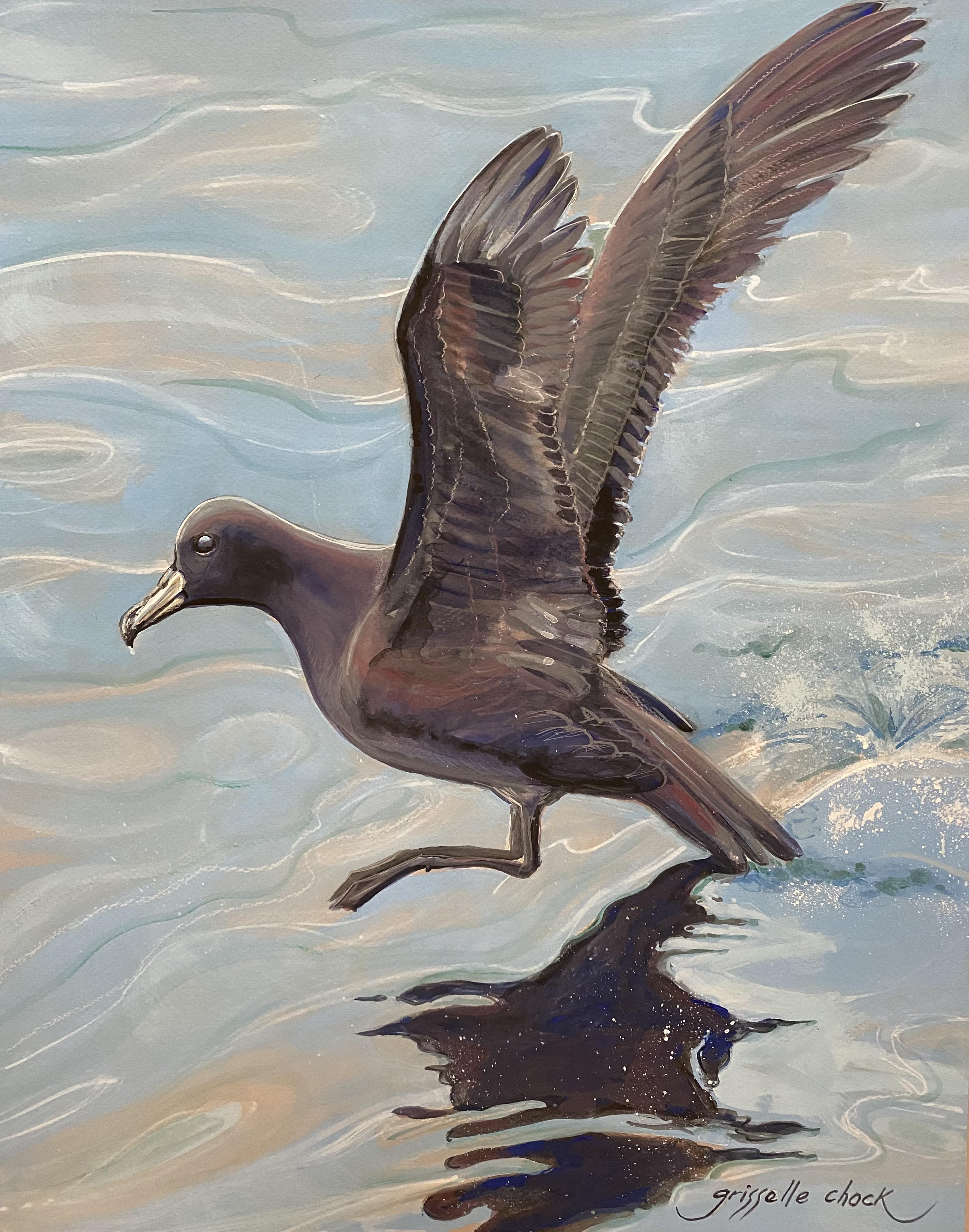
Black Petrel, gouache by ABUN artist Griselle Chock for ACAP; photograph by Virginia Nicol
Note: The illustrated Species Summaries have been written to help inform the general public, including school learners, of the biology and conservation needs of the 31 ACAP-listed species. They serve to complement the more detailed and referenced ACAP Species Assessments. To date, summaries for the 22 species of albatrosses have been produced in in all three ACAP official languages, English, French and Spanish.
Texts have also been prepared for the nine ACAP-listed petrels and shearwaters in English, but as yet have not been translated into French and Spanish. As an interim service, the illustrated English texts are being posted to ACAP Latest News, continuing here with the Black Petrel Procellaria parkinsoni.
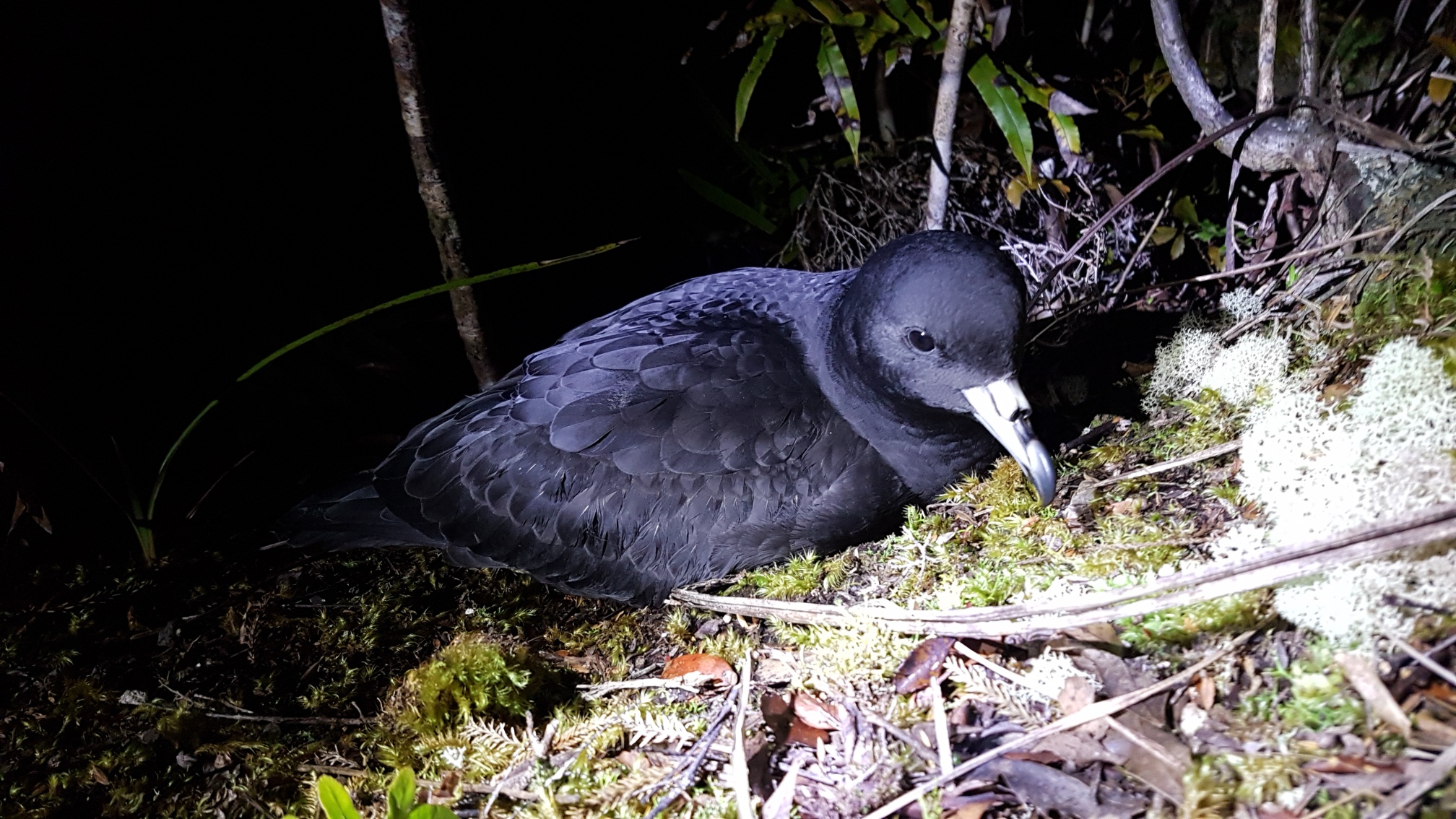
A fledgling Black Petrel, Mount Hobson/Hirakimata, Great Barrier Island, May 2019; photograph by ‘Biz Bell’, Wildlife Management International
The Black Petrel is one of five medium-to-large petrels within the genus Procellaria, along with the Grey, Spectacled, Westland and White-chinned; it is the smallest of the five. Among all the petrels and shearwaters in the family Procellariidae, they are the largest that dig and breed in burrows. The species is overall dark brown to black, with black legs and feet. The bill is yellowish to white with a black tip. It is similar in appearance to the larger Westland Petrel.
The Black Petrel is a New Zealand endemic that currently breeds on only two islands, Little Barrier (Hauturu; 28 km², 722 m) and around the summit of 627-m Mount Hobson (Hirakimata) on Great Barrier (Aotea; 285 km²) in the outer Hauraki Gulf of North Island. In the past it bred in the mountains of both the North and South Islands – where it did not survive introduced mammalian predators. At sea its range extends to the east coast of Australia (when breeding) and to the Pacific coast of South America as nonbreeders, as shown by tracking studies. Estimates suggest there are less than 3000 breeding pairs with an overall population of around 11 000 birds, including juveniles. Around 600 pairs breed on permanently uninhabited Little Barrier with 2000-2500 pairs on and around Great Barrier’s Mount Hobson where the petrel has been monitored from the 1995/96 breeding season. The population is assumed to be stable on both islands, following recovery from cats on Little Barrier. Black Petrels breed colonially, laying their single eggs in burrows dug within forested areas in the austral summer. Diet includes fish caught by day and more rarely bioluminescent squid caught at night, both by mostly shallow dives to less than five metres.
The species is at risk to fishing, being caught on longlines when scavenging behind vessels in both New Zealand and South American waters. This, a calculated low adult survival rate, low juvenile recruitment and its restriction to only two breeding sites have given it both a global and a national threat category of Endangered. It is listed both within the Albatross and Petrel Agreement (ACAP) and the Convention on Migratory Species on Appendix II.
Little Barrier Island is a Nature Reserve (New Zealand’s first, established in 1896) with the public requiring a permit to visit during the day only in limited numbers. It has been identified as an Important Bird Area by BirdLife International. Great Barrier Island has a small resident community of under one thousand, high numbers of visitors, and large forested areas classified as a Scenic Reserve. Little Barrier has no introduced predators following the removal of feral cats and Pacific Rats, whereas Great Barrier has Ship and Pacific Rats, feral cats and feral pigs; feral goats were eradicated in 2006. Trapping to control rats and cats takes place within the Mount Hobson study site where visitors are restricted to walking tracks and boardwalks to avoid disturbing burrows by trampling. Translocation of chicks from Great to Little Barrier took place in the past to bolster the population on the smaller island.
Sources:
ACAP 2012. Black Petrel Procellaria parkinsoni.
Bell, E.A. 2013. Black petrel. In: Miskelly, C.M. (Ed.) New Zealand Birds Online.
Bell, E.A. 2021. Featuring ACAP-listed species and their photographers: the Black Petrel by Elizabeth Bell. ACAP Latest News, 01 October 2021.
BirdLife International 2021. Species factsheet: Procellaria parkinsoni.
John Cooper, ACAP Information Officer, 05 April 2022
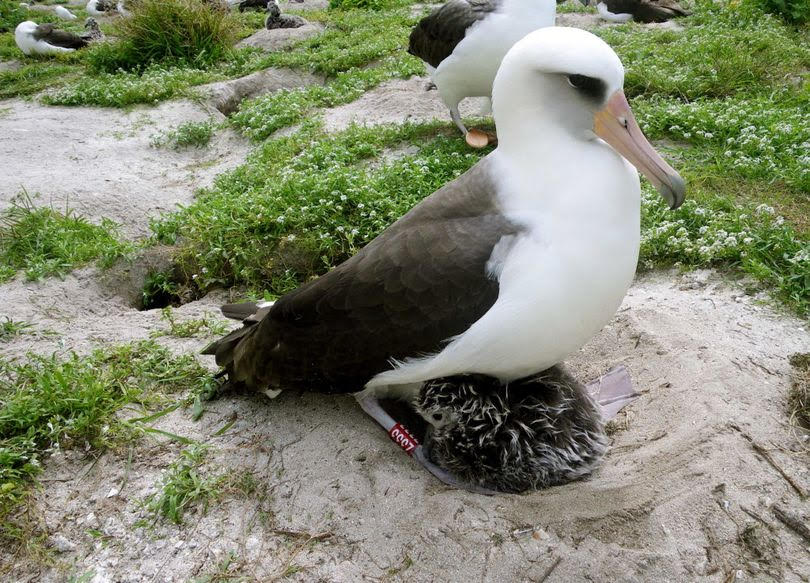

 English
English  Français
Français  Español
Español 

